How to Grow Your Own Superfoods
Five superfoods that you’re better off growing at home.
How to Grow Your Own Superfoods
Five superfoods that you’re better off growing at home.
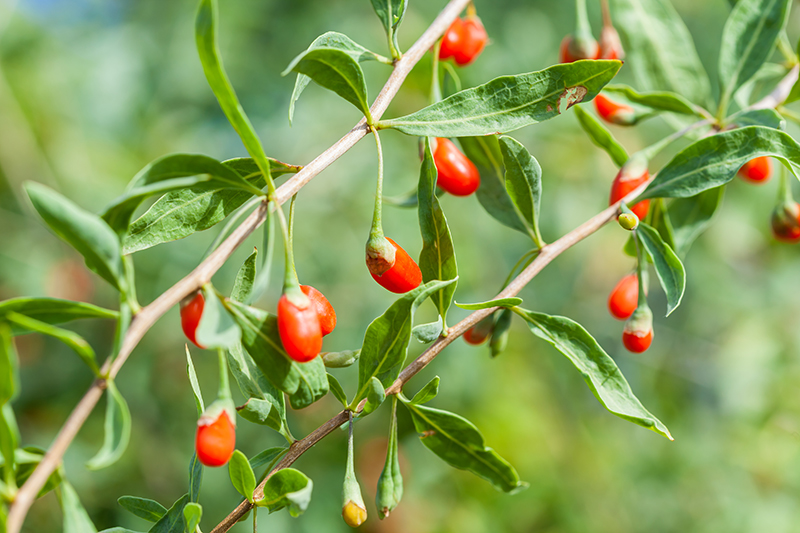
A “superfood” typically gets that moniker when it overflows with more nutrients than most other foods we eat, or if it has some special type of nutrient that’s rare in the modern diet. Whether such claims are primarily marketing hype or have some basis in fact depend on the foods in question. So while the nutritional merits of an ordinary blueberry versus, say, a macqui berry from the pristine slopes of the Chilean Patagonia continue to be debated, eating macqui berries is probably a healthy habit – it’s just a matter of whether they are worth $20 per pound.
But if you had such plants growing in your backyard, they’d be free for the snacking, and you could spend less time researching their health benefits on the Internet and more time out in the sunshine tending to them.
Not all superfoods are easy to grow at home, though. Brazil’s famous acai berries, for example, come from an Amazonian palm, which won’t thrive anywhere without constant humidity and temperatures above 50 degrees. Others – like macqui, a gawky looking shrub that is as common as forsythia in parts of Chile – are simply difficult to find. Currently an Internet search turns up a single nursery that sells macqui seeds and seedlings in the US.
In the name of saving you money – and introducing you to some really fascinating plants – here are five superfoods, unmasked of all their sexy packaging, that are fairly easy to grow in average garden conditions (and to obtain from nurseries). We’ll leave the debate over how nutritionally superior they are to the scientists.
Goji Berries (Lycium barbarum)

For centuries, if not millennia, goji berries were used in traditional Chinese medicine and as a raisin-like snack. Related to tomatoes, these perennials (hardy to USDA zone 5) have tiny red fruits on sprawling nondescript shrubs, which grow to about a head high.
They thrive in full sun with regular water, but have no other special demands. Any soil type that isn’t swampy is fine. Cut them back by two-thirds or so each fall to maintain a compact shape. They start fruiting in early to mid-summer and continue until the first frost of fall.
Scores of mail-order nurseries stock goji berries, and they are increasingly common in retail nurseries, especially those that specialize in herbs and edibles. Goji is also known as wolfberry, the name given by English-speaking people when they “discovered” the species.
White Mulberries (Morus alba)
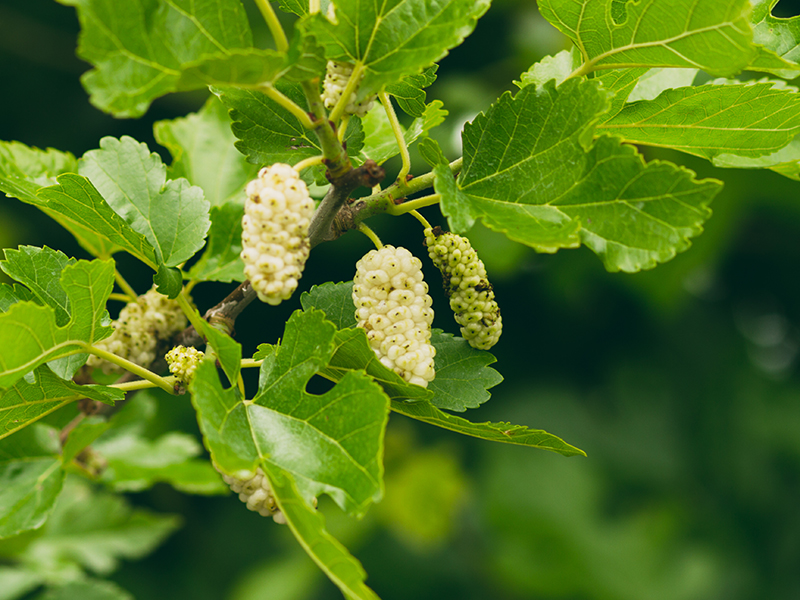
They look exotic, but white mulberries are a weedy tree throughout much of China. Historically, the leaves were fed to silkworms, though ancient silk farmers undoubtedly enjoyed the fruit as well. In modern times, white mulberries have naturalized (read: grows like a weed) in the US and many other countries. According to, what some might consider a health guru, Dr. Oz, they’re good for the heart, far lower in sugar than most fruits, and have a host of other health benefits.
Raintree Nursery
One Green World
Strictly Medicinal Seeds
Richters
Growing up to 30 feet with a slightly drooping shape, white mulberries make an attractive shade tree with the bonus of exquisite fruit. They need full sun, average soil, and regular irrigation to get started, but once established white mulberries are fairly self-sufficient. White mulberry cold hardiness varies from USDA zone 5 to zone 9, depending on the variety.
There are many other types of mulberries with black and reddish fruit, including North American native species, that are just as tasty. But if you really want a white-fruiting mulberry, seek out varieties like ‘Tehama’ or ‘White Pakistan’. Confusingly, not all Morus alba trees have white fruit and some mulberry trees with white fruit may be labeled as Morus nigra, the black mulberry (fruit color is genetically variable in the Morus genus). To simplify that horticultural labyrinth when shopping for white mulberry trees, simply read the description of each variety to make sure it has the fruit color you want. Unlike black and red mulberries, the white ones don’t make permanent stains on clothing, driveways, and lawn furniture.
Bilberries (Vaccinium spp.)
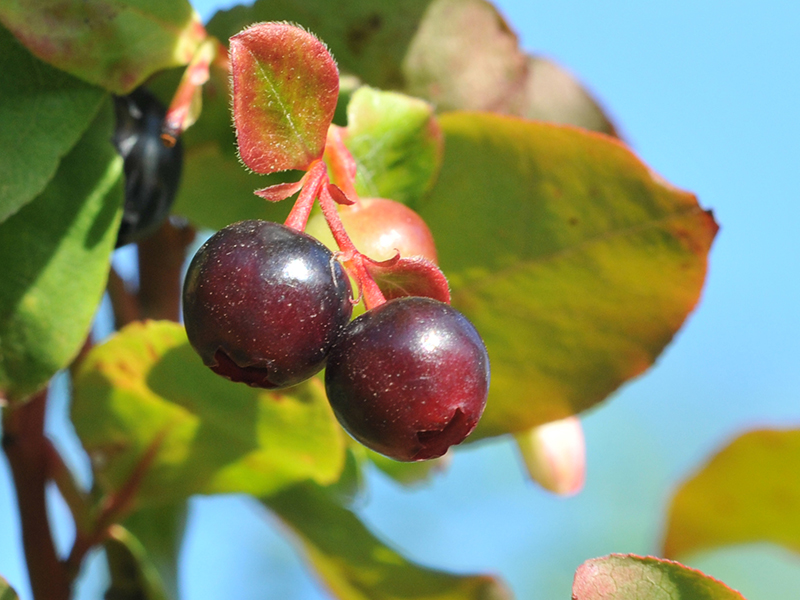
Bilberries are essentially a wild European blueberry. The name is used in reference to several members of the Vaccinium genus, which have similar fruit. Blueberries, as we know them, are native to North America and have been bred for commercial production, a process which may have diluted the concentration of antioxidants and other health-promoting compounds they are renowned for compared to their wild cousins. Bilberries have higher antioxidant levels than blueberries and virtually any other fruit.
Bilberries are generally low-growing groundcovers found in bogs and heaths. They look like a dwarf blueberry plant and respond well to similar garden conditions: full or part sun, ample moisture, and rich acidic soil with a pH of 5.5 or below. Add shredded peat moss or sulfur to the soil to lower the pH, if needed. Bilberries are extremely cold hardy, surviving down to USDA zone 3.
Vaccinium myrtillus is the plant most commonly sold as bilberry. But there are many other plants that produce a nearly identical fruit that are also available in nurseries, such as huckleberry (a North American native shrub) and lingonberry (what that red sauce at Ikea is made of).
Golden Berries (Physalis peruviana)
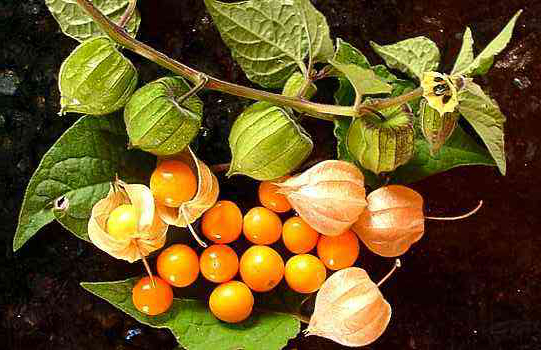
In superfood parlance, these are also known as Inca Berries, after the ancient Peruvians who first cultivated them. But before they attained superfood status for their high levels of vitamins, A, B, C, iron, and other nutrients, North Americans referred to them as cape gooseberries or ground cherries – they are all the same plant, a species in the Nightshade family that looks and tastes like a cross between a tomatillo and a cherry tomato.
Grow golden berries exactly as you would a tomato, except don’t bother with a trellis as they grow happily along the ground. Fortunately, they are resistant to most of the insidious diseases that plague tomato plants, like late blight and Fusarium. Golden berries are perennials in frost-free climates (as are tomatoes), but are generally grown as annuals.
You may be able to locate golden berry seedlings in spring and summer, but most gardeners grow them by seed. These are easily germinated indoors and transplanted after all danger of frost has passed. Like cherry tomatoes, golden berries sometime “volunteer” in the garden – meaning seeds from unharvested fruit sprout on their own each year.
Seaberry (Hippophae rhamnoides)
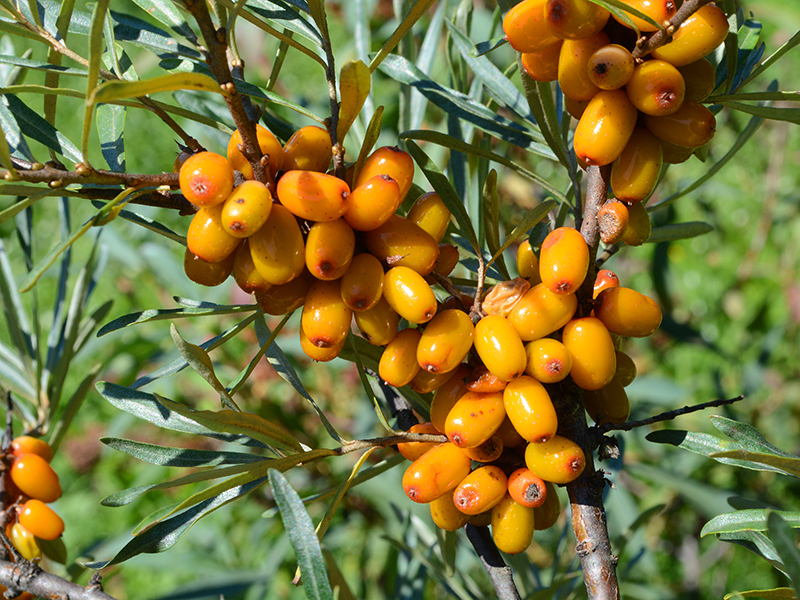
This thorny shrub is native to mountain cliffs and sand dunes throughout Europe and Central Asia. Prior to being marketed as a superfood for its high levels of folic acid, vitamin C, vitamin E, beta carotene, omega-3s, and an impressive list of other health attributes, seaberry was more commonly referred to as sea buckthorn.
Growing 8 to 12 feet tall, seaberry makes an impenetrable hedge that becomes laden with orange fruit in fall. It thrives on neglect: poor soil, minimal irrigation, high winds, blazing sun, and Arctic temperatures are the norm in its native habitats. These shrubs are hardy to USDA zone 3.
Seaberry only produces fruit when both male and female varieties are present – this is known as cross-pollination. Most named cultivars are female, while males are usually labeled “male” and sold alongside the females. You can also purchase unnamed seedlings, which are essentially wild plants that will be a 50-50 mix and males and females, ensuring pollination.
Follow us
This work is licensed under a Creative Commons Attribution-NoDerivatives 4.0 International License.
Want to republish a Modern Farmer story?
We are happy for Modern Farmer stories to be shared, and encourage you to republish our articles for your audience. When doing so, we ask that you follow these guidelines:
Please credit us and our writers
For the author byline, please use “Author Name, Modern Farmer.” At the top of our stories, if on the web, please include this text and link: “This story was originally published by Modern Farmer.”
Please make sure to include a link back to either our home page or the article URL.
At the bottom of the story, please include the following text:
“Modern Farmer is a nonprofit initiative dedicated to raising awareness and catalyzing action at the intersection of food, agriculture, and society. Read more at <link>Modern Farmer</link>.”
Use our widget
We’d like to be able to track our stories, so we ask that if you republish our content, you do so using our widget (located on the left hand side of the article). The HTML code has a built-in tracker that tells us the data and domain where the story was published, as well as view counts.
Check the image requirements
It’s your responsibility to confirm you're licensed to republish images in our articles. Some images, such as those from commercial providers, don't allow their images to be republished without permission or payment. Copyright terms are generally listed in the image caption and attribution. You are welcome to omit our images or substitute with your own. Charts and interactive graphics follow the same rules.
Don’t change too much. Or, ask us first.
Articles must be republished in their entirety. It’s okay to change references to time (“today” to “yesterday”) or location (“Iowa City, IA” to “here”). But please keep everything else the same.
If you feel strongly that a more material edit needs to be made, get in touch with us at [email protected]. We’re happy to discuss it with the original author, but we must have prior approval for changes before publication.
Special cases
Extracts. You may run the first few lines or paragraphs of the article and then say: “Read the full article at Modern Farmer” with a link back to the original article.
Quotes. You may quote authors provided you include a link back to the article URL.
Translations. These require writer approval. To inquire about translation of a Modern Farmer article, contact us at [email protected]
Signed consent / copyright release forms. These are not required, provided you are following these guidelines.
Print. Articles can be republished in print under these same rules, with the exception that you do not need to include the links.
Tag us
When sharing the story on social media, please tag us using the following: - Twitter (@ModFarm) - Facebook (@ModernFarmerMedia) - Instagram (@modfarm)
Use our content respectfully
Modern Farmer is a nonprofit and as such we share our content for free and in good faith in order to reach new audiences. Respectfully,
No selling ads against our stories. It’s okay to put our stories on pages with ads.
Don’t republish our material wholesale, or automatically; you need to select stories to be republished individually.
You have no rights to sell, license, syndicate, or otherwise represent yourself as the authorized owner of our material to any third parties. This means that you cannot actively publish or submit our work for syndication to third party platforms or apps like Apple News or Google News. We understand that publishers cannot fully control when certain third parties automatically summarize or crawl content from publishers’ own sites.
Keep in touch
We want to hear from you if you love Modern Farmer content, have a collaboration idea, or anything else to share. As a nonprofit outlet, we work in service of our community and are always open to comments, feedback, and ideas. Contact us at [email protected].by Brian Barth, Modern Farmer
June 1, 2016
Modern Farmer Weekly
Solutions Hub
Innovations, ideas and inspiration. Actionable solutions for a resilient food system.
ExploreExplore other topics
Share With Us
We want to hear from Modern Farmer readers who have thoughtful commentary, actionable solutions, or helpful ideas to share.
SubmitNecessary cookies are absolutely essential for the website to function properly. This category only includes cookies that ensures basic functionalities and security features of the website. These cookies do not store any personal information.
Any cookies that may not be particularly necessary for the website to function and are used specifically to collect user personal data via analytics, ads, other embedded contents are termed as non-necessary cookies.
Excited about these Super Foods!